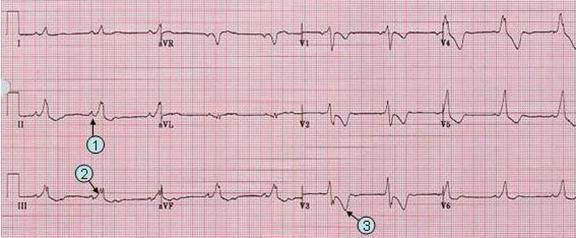 | |
WPW case 3. | |
| Patient has both WPW (above) and LBBB at different time. | |
| Patient. 53 year old male with cardiac history includes previous stent placement of the LAD lesion in 1999. He has been treated for dilated cardiomyopathy with ejection fraction of 30-35%. Patient was admitted this time for treatment of rapid heart beat. The WPW syndrome is not related to coronary artery disease. | |
| I
V2
|
Characteristic: Other
findings: |
| Go
to WPW page Go to predominant R wave in V1 (R/S ratio >1). Go to axis deviation. | Go
to pseudo (infarction) Q wave. Go to main menu |

